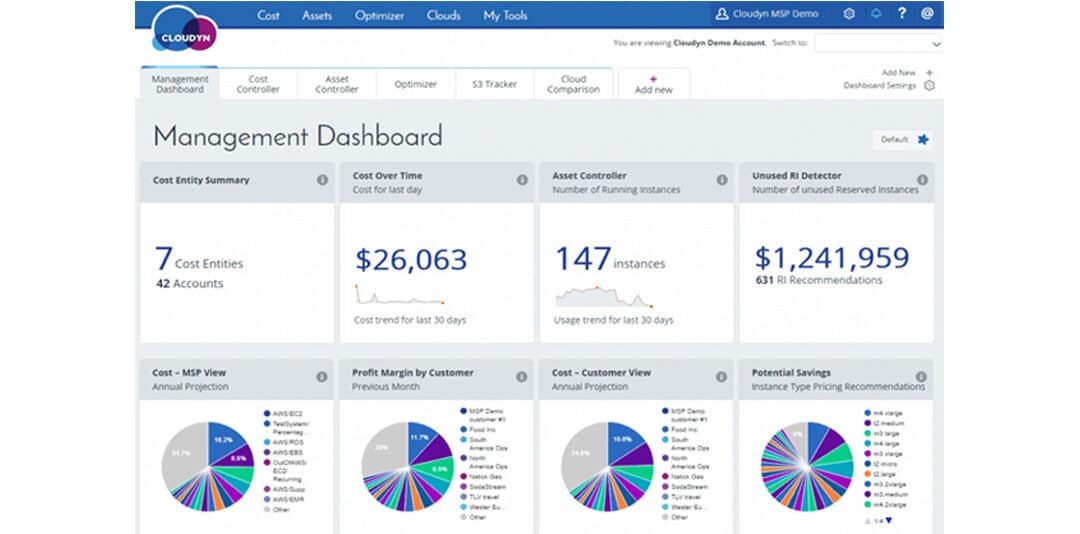
by chris | May 9, 2018 | Energy
Many businesses begin collecting energy data as a means of saving energy – and energy costs. While this remains one of the greatest benefits of energy data analysis, its appeal does not start nor end with direct financial considerations.
In fact, focusing only on energy savings has led to an underestimation of the full value of data-backed energy management in global economies.
Across all sectors – from manufacturing to retail to healthcare – organisations are harnessing the operational efficiency benefits that result from energy data like never before by:
- Assembling and integrating energy data to share across the enterprise
- Combining data and advanced analytics
- Benchmarking against historical data, similar devices, comparable locations, and industry standards
- Acting on alerts and insights to ensure the reliability and performance of critical assets
Using energy data for operations and maintenance results in a wide range of benefits across the enterprise. Organisations are harnessing the operational efficiency benefits that result from energy data like never before.
Transparent collaboration
Businesses, today, generate more data than ever before, yet often, very little is actually used to make real-time decisions. Different departments gather their own data and do not always share it across the organisation.
Collecting data from critical devices formulates a single source of truth that can be easily shared across teams, departments, and entire enterprises. This breaks down information silos and enables managers to set KPIs and predict and avoid waste.
Increased production yields
Both discreet and processed manufacturers rely on the optimal performance of their production machinery energy as a lifeblood. Manufacturers think profit per hour and total profit should be driving factors in making decisions.
By monitoring the energy data of their machinery, manufacturers can now link their operational goals with energy performance. Ensuring equipment optimisation and effectiveness with live equipment status monitoring helps create greater outputs and enables users to calculate the cost of production per equipment/production line.
Improved maintenance schedules and expedited decision making
Initiating a systematic approach to energy data gathering at the device level, manufacturers can be alerted to anomalies in their critical devices. By diagnosing, troubleshooting, and servicing the machinery that is showing irregular consumption patterns, they prevent imminent disruptions or even breakdowns.
From kitchen equipment to HVAC, lighting and industrial machinery – maintenance schedules are improved and become more cost-effective.
When time is money, a quicker decision is a more profitable decision. Enterprise-level decisions that are based on data are reliable and undeniable.
Energy data enables the transformation of facility and maintenance groups from a cost centre to a value centre. No longer do these groups weigh on the company’s bottom line. Instead, they become the suppliers of data that adds value by informing decision-makers of opportunities for savings and optimisations.
Energy forms a sizable share of operating costs
Operational efficiencies from energy data
The starting point for most operational-improvement efforts is incremental change: taking an existing process as a baseline and seeing what improvements are possible from that point.
Saving energy, funnelling the savings to the bottom line, and reducing carbon emissions are all worthy benefits of energy data. Adding the multiple benefits to operations, albeit sometimes difficult to measure or quantify, increases ROI. Operational efficiencies maintain the value of the business while reducing the required resources.


by DavidSpratt | Apr 4, 2018 | Energy
Last month’s article on electric vehicles elicited responses ranging from “hippy, coombyah, PC, Greenie horse poo” through to “Where can I get one of these gosh darn, new-fangled, electric buggies?”. Thanks to you all for your feedback.
Rather than take sides in the debate about whether or not we should be buying electric vehicles, let’s examine the drivers that inform the decisions we will all make around which vehicles our companies buy.
Price
Electric vehicles are expensive. Buying electric vehicles today, we can expect to pay BMW prices for Corolla performance. As production volumes rise we can expect this delta to shift to equilibrium. In the meantime, expect FBT to be high on the financial controller’s agenda.
Fuel costs
Petrol costs around $2 per litre. An electric vehicle equivalent is 30 cents per litre. For the average company car fleet, this is a huge saving. Expect changes though. The government taxes the heck out of petrol and diesel and will likely move to Electric Vehicle road user charges to protect their revenues. If the IRD is true to form you can expect the tax per kilometre to be the same in the future as it is today, regardless of the vehicle type you choose.
Resale value
Last month five German cities announced bans on diesel vehicles. A court ruling means many others may follow suit across Europe. This has seen the resale price of second-hand diesel cars in Germany plummet as up to 12 million diesel vehicles will be forced off their roads by 2020. We can expect to see residuals becoming a major question for procurement managers as the popularity of second-hand petrol and diesel vehicles declines across the world.
Servicing
Electric vehicles have around 20 moving parts compared to the 2000 parts we find in the average sedan. This translates into far greater simplicity, reliability and with that, much lower service charges. Expect huge changes in the way new cars are sold and serviced in the years ahead. Lifetime warranties and free service schedules anyone? Finding a trained electric vehicle mechanic might be a trick though.
Insurance
Insurance companies are looking with a jaundiced eye at the high price of buying electric vehicles and more significantly at the cost of repair. If you prang your $120,000 Tesla there is currently no repair facility in NZ. Your insurer will need to ship your pride and joy to Australia or write it off. That’s a recipe for weeks off the road and higher insurance premiums.
Range
Assuming you keep the air conditioner off and aren’t stuck in traffic, the average new electric vehicle has a range of around 200kms fully charged. This is less than half the range of an average petrol-powered car. A private car only travels 40kms per day on average and range will get sorted in time. Right now, though, most company cars don’t have the luxury of sitting around in the garage or being stranded on the side of the road.
Charging
It takes quite a while to charge an electric vehicle, from 30 minutes at a fast charge station through to twelve hours on a single-phase home connection. Add to this the lack of fast charge facilities and questions around just how well our distribution grids will cope with the peak demand of 3 million electric cars charging while we are cooking dinner and the industry faces quite a few challenges.
Choice
Today there are around 30 new electric vehicle car models available in New Zealand, compared with literally hundreds of petrol and diesel cars. By the end of next year, the number and quality of new electric vehicle car models will rise to over 100 while petrol and diesel choices will fall. Expect this trend to continue.
Lack of information
Finding unbiased data on electric vehicles is tough and in many cases, the information is contradictory and confusing.
One place you can all go for well-presented, easy-to-understand information is the Energy Efficiency and Conservation Authority (EECA). It is biased in favour of electric vehicles but nonetheless, it provides useful facts as you evaluate your options when considering buying electric vehicles.
This article is the second part of a series on electric vehicles. Part 1 explored the business case for electric vehicles. Next month I will look at the impacts of putting several million electric vehicles onto an already complex electricity grid. I will also explore the ways our government and our electricity industry is likely to respond to these challenges.
Read more electric car analysis in the New Zealand/Australia context, or take a look at these electric car reviews.

by Jon Rabinowitz | Mar 23, 2018 | Energy, ICT
A client of ours recently installed energy sensors across two areas of their facility. One area is significantly old using good practice equipment for the time, the other brand new and utilising advancements in equipment technology. Both areas are similarly sized and perform the same operation, however, measuring energy performance between the old and new will provide our client with real insights when making future strategic decisions.

While our client operates a large portfolio of facilities around the North Island, they are using this specific site as a sandbox environment, a testbed to trial new initiatives as they look to upgrade and replace existing equipment at their other facilities.
Utilising real-time energy data to measure performance against a range of benchmarks will allow them to verify performance gains and deliver insights into which areas should be prioritised in their long-term business plan.
Non-intrusive wireless energy sensors that can be easily moved to measure other areas, combined with powerful cloud-based software reporting tools provide a cost-effective and flexible way to build business cases.
The following article, written by Jon Rabinowitz at Panoramic Power, highlights the fact that, with Internet of Things (IoT), businesses can now test ideas in a quick and cost-effective manner while collecting valuable data for future decision making.
The Internet of Things has exploded onto the scene and with it a slew of potential business applications. In navigating this terra nova, most decision makers take their cues from the competition, afraid of wading too far into the unknown. This is reasonable, of course, but it’s also a big mistake.
Smart business owners and managers should know that they don’t need to resign themselves to the role of a follower in order to hedge their bets and mitigate their exposure to risk. You can lead and be cautious at the same time!
A False Dichotomy in Applied Internet of Things Investment
Consider, for example, the business value of smart, self-reporting assets. These assets hold the promise of constantly refined operational processes, reduced maintenance costs (as issues are caught and corrected in the earliest stages before degradation occurs), extended lifecycles and the elimination of unplanned downtime.
Still, few things ever go exactly according to plan and deliver quite as advertised. So it’s understandable that prudent decision makers might set expectations below the promised value. Add to that the fact that overhauling and replacing the entirety of your asset infrastructure is incredibly expensive and a terrible disruption to operations.
It’s easy to see why some business owners and managers might prefer to sit back and let “the other guys” take the lead in implementing Internet of Things into their business operations. But easy to see and right are two very different things.
The right approach is significantly more nuanced, as the rationale presented above is built on a false dichotomy. Your choice isn’t between sitting back and doing only what the other guy already succeeded at or totally replacing all your critical assets. There’s a world of options spanning the divide between those two.
The Golden IoT Mean: New Operational Intelligence, Old Equipment
Science and technology are both predicated on the principle of testing and your business should be the same. It always makes sense to “pilot” new technologies or techniques before deploying them at large. Beyond that though, using advanced Internet of Things technologies and tools, you can infuse new operational intelligence into old equipment without replacing anything.
Until your industry has reached a “mature” state in its development and integration of IoT technologies, this is the best way to mitigate risk without forfeiting access to value while it’s still a comparative advantage.
Using smart, non-intrusive energy sensors – each about the size of a 9-volt battery – you could retrofit past-gen assets to enable next-gen operational intelligence. Simply snap a sensor onto the circuit feeding the intended asset. No need to suspend operations; no need for complicated installation.
After your sensors are in place, enter the corresponding ID numbers into the mapping console. Immediately, these sensors will begin reporting granular energy data, pumped through an advanced, machine-learning analytics platform, and turning out new operational intelligence to be acted upon.
In this manner, facility managers can give a voice to their critical assets, allowing for advanced operational automation, predictive maintenance and generally increased production.

by DavidSpratt | Mar 2, 2018 | Energy
True story. An employee took the flash new company Electric Vehicle (EV) up North on a sales trip. On the way home, they realised that the battery charge was running out so stopped in a small town to find a charging point. There was, inevitably, no charging station for electric vehicles so they rang the tow company and got a ride home alongside a towie with bad breath and even worse body odour. Back at work, the boss pointed out the switch that turned the hybrid vehicle back to petrol power.
My point? Electric Vehicles (EV’s) are still a bit of a mystery both to their users and to the people making the financial decisions.
Add to this the element of uncertainty of buying a car from a man who straps his second-hand sports cars to a space rocket and whose loss-making company can’t actually deliver a simple sedan on time and you must have to have reservations around updating your fleet from petrol to electric.
Despite the uncertainty let’s examine the business case for electric vehicles.
Business Case for Electric Vehicles
At a recent presentation to energy sector leaders, Gary Holden, CEO at Pulse Energy and a well-known thought leader and innovator, proposed that it costs, all up, around $10 to travel 100kms in a car and that it has pretty much always done so.
Simply put, it cost the same for a Model T in 1920 to travel 100km as it did for a Honda Accord to travel the same distance in 1990. The reason? Internal combustion engines are, and always have been, between 25% and 30% efficient. Any gains achieved through advances in technology are quickly swallowed up by faster travel – or slower if you are travelling on that great carpark known as the Auckland motorway network.
Along come electric vehicles and a very simple idea. Capture the energy of braking and stuffing it into a battery and 30% efficiency suddenly rises to 80%, 3 times more efficient than a petrol engine.
Cheap Electricity Provides Strategic Advantage
Now add the New Zealand strategic advantage, cheap renewable hydropower, and the comparative cost of electricity to that of a barrel of oil, roughly US$40 on average for the last forty-five years, is now almost exactly half that at $20. “In other words,” says Gary “for oil to compete with electric it would have to permanently return to pre- 1973 prices.”
Is it any wonder we are seeing major oil producers falling over themselves to drop the price of oil and investing in massively polluting extraction of shale oil and fracking in order to slow down the inevitable march of electric vehicles into the market?
Barriers to Adoption of Electric Vehicles Disappearing
So, what is stopping New Zealand’s companies from rapidly switching to electric vehicles, say by 2020? Not a heck of a lot according to Gary.
He believes, and I agree, that by 2020 the premium we pay for electric cars will be a thing of the past. The high running cost, inefficiency and plain nasty polluting qualities of petrol vehicles will mean that electric vehicle leaseholders will see higher residual prices being offered at the end of their three-year term (2023) Combine that with the electric vehicles superior efficiency, low operating cost and ever-increasing range and companies should be looking very, very hard at their vehicle choices.
There is, however, more to this equation than a simple cost per kilometre and residual value. Our electricity market is complex, riven with contradictions and slow to respond to demand drivers like electric vehicles. Next month I will have a close look at the forces in the New Zealand market that will either hasten or slow electric vehicle uptake.
This article is part 1 of a series in which I will explore the EV future over the coming months. Part 2 discusses buying electric vehicles.
Read more electric car analysis in the New Zealand/Australia context, or take a look at these electric car reviews.

by Jon Rabinowitz | Feb 16, 2018 | Energy, ICT
In the past couple of years, we have written a lot of commentary about how the world of IT and the world of Energy are converging. As more and more companies are choosing not to own and operate their IT, the role of IT departments is fast moving away from just technical support towards strategic thinking informed by data analysis. The same can be said for Energy as companies gain access to wireless energy monitoring via cloud-based analytics, CIO’s and IT managers have equal interest as COO’s and plant managers as the Internet of Things is rolled out.
 The convergence of data across all areas of a business is quickly growing and how this data is used to inform executive as well as operational level decision making and planning. In the last 12 months, Total Utilities has installed several hundred wireless energy sensors around New Zealand. Data from these energy sensors are being used across numerous areas from cost allocation, performance and product benchmarking, energy efficiency, sustainability reporting, preventative maintenance and tenant rebilling.
The convergence of data across all areas of a business is quickly growing and how this data is used to inform executive as well as operational level decision making and planning. In the last 12 months, Total Utilities has installed several hundred wireless energy sensors around New Zealand. Data from these energy sensors are being used across numerous areas from cost allocation, performance and product benchmarking, energy efficiency, sustainability reporting, preventative maintenance and tenant rebilling.
The following article was written by Jon Rabinowitz and underlines the need for cross-section planning and acceptance to ensure IoT success. Total Utilities can help your business through this planning process to ensure that key stakeholders are part of your IoT journey.
The most effective way to derive value from sensor technology and big data is to ensure you can analyze and act on the information gathered.
When sensors are deployed as data capture/communication instruments and paired with best-in-class Big Data analytics, the result is the life breath of value-driven Internet of Things technology. Unfortunately, more often than not, IoT systems are rolled out without proper planning, and simply so some manager can check a box and say that he or she undertook an IoT initiative.
When organizations are driven by hype, that value-generating substance generally falls by the wayside. Too often this is the case with IoT projects pursued for their buzz-worthiness, without due attention paid to the smart sensor and Big Data nuts and bolts of the thing.
Indeed, IoT for IoT’s sake can only get you so far. Ganesh Ramamoorthy, a principal research analyst at Gartner, told The Economic Times that “8 out of 10 IoT projects fail even before they’re launched.” If we’re to believe that figure, it begs the question, what are companies doing wrong?
Why Companies Fail In Putting Sensors and Big Data to Work
Compelled by topical hype, there’s often a sense of urgency associated with IoT projects. According to Mark Lochmann, a senior consultant at Qittitut Consulting, that self-imposed urgency gets the best of organizations. In an interview with IndustryWeek, Lochmann explains that many enterprises “dive headfirst” into Internet of Things projects without really understanding how the technology affects their operations.
Too often decision-makers get themselves drunk on buzz and embark on technology rollouts, without really understanding what needs to happen and how that tech needs to tie back into business operations in order to derive value. They simply neglected to consider how installing hundreds, possibly thousands of sensors across their business is supposed to portend an improved bottom line.
To avoid missteps, be sure to consider the following practical factors:
- Where the sensors will process the data (point of creation, edge devices, in the Cloud, etc.)
- Which tools analysts need to visualize and interpret data.
- How the company will validate and cleanse sensor information.
- The data governance policies which will protect data.
- The infrastructure necessary to support analysis (data warehousing, data mart, extract transport load servers, etc.).
Lacking wherewithal on these basic project components, research from PricewaterhouseCoopers and Iron Mountain reveals that only 4% of enterprises “extract full value” from the data they own. However, it’s not just planning that’s holding companies back either. The same study found that an additional 36% of businesses were hamstrung – regardless of how thoroughly they’d thought through the project – due to system and resource limitations.
That paints a rather bleak picture, but there’s no reason to despair. The above statistics notwithstanding, there remains plenty that conscientious managers can do to ensure the success and of their integrated sensor and Big Data initiatives.
Start With Specific Use Cases, Then Dig Deeper
Many organizations don’t know how sensors and big data will impact their data centres.
Managers leading sensor and Big Data projects need to outline specific use cases before even thinking about implementation.
A smart manager will have a firm handle on how such technology is likely to impact operations on a day-to-day level – not based on intuition or imagination but on data. Better yet, that manager will set very specific expectations, delivery processes and timelines for what he or she wants to achieve on the back of sensor and big data technology.
For example, let’s say you want to install advanced wireless sensors in your facility. The person leading the project should explicate his or her intention to leverage collected data in order to:
- Diagnose problems with equipment to predict failures.
- Analyze the production efficiency of each asset.
- Determine how many tons of material you process on an hourly basis.
- Monitor worker health and locations across the facility.
Of course, not all data is equal and the lion’s share of that discrepancy will depend on the data type. Data pertaining to equipment functionality, it should be understood, is among the most important and time-sensitive. Such data should be processed immediately given that it can tell the story, in real time, of costly malfunctions.
Some of your data will demand review in real-time, some every half hour and some every other month. Most will find itself living between those poles. Regardless of the data type though, you’ll need to be sure that when you consult it, it conveys something that is actually meaningful and actionable. For this, you’ll need to plan out and gain relative mastery over your processing system.
This means carefully choosing an analytics solution or a combination of complementary solutions. It may also mean hiring an in-house data scientist or simply bringing in outside help for training purposes. In some cases, it will even mean building out an on-site information network. In every case, it will mean instilling a data- and value-driven culture, where employees not only have access to tools but know when and how to properly use them.
Remember, there’s no such thing as too much research and that hype can be as dangerous as it is enticing. Bearing that in mind, the world of IoT is big and wide and waiting for you!

by DavidSpratt | Feb 7, 2018 | ICT
Last week the IT industry was shocked to find that the Intel chipsets that drive many of our phones, smartphones, laptops, desktops and our servers, have an architectural flaw that exposes them to hacking. The other two major chipset manufacturers AMD and ARM appear to be much less affected.

By patching their operating systems to address this design flaw in the Intel chipset the OS providers have been forced to sacrifice the thing that impacts us most, performance. The numbers aren’t out yet but we could be seeing reductions in performance of between 5% and 30%.
For the average user, even a 30% reduction in performance on their laptop or smartphone might not have any discernible impact. Most of us don’t use even a fraction of the capability of our machines and with the consumption of cloud software services such as Office 365 the compute power is in the cloud anyway. But herein lies the problem…
Cloud Service Providers (CSP’s) like Microsoft, Google and Amazon are massive consumers of high-intensity computing power. Every day they wrestle with optimising the cost and performance of their infrastructure environments to deliver to their own and their customers’ needs.
CSP’s have been the first to implement the security patches on their servers, as you would expect from responsible global providers. This is where a 30% performance reduction really hurts. My guess is that their systems architects have been in a right state of panic about how to address the possibility of significant performance degradation unless loads of new equipment is installed in a hurry.
What does this mean to you, the business user of cloud services?
The future performance, and thus the relative cost, of chipsets, will also likely change for the worse in the short to medium term. The security flaw I mentioned earlier was based on the need for manufacturers to make chipsets run faster. This design is now no longer acceptable from a security perspective and will have to change somehow. It will take time for them to come up with a new solution. In the meantime, all those performance/price gains we have come to expect in the past will be very hard won indeed. Expect increases in prices for Intel-based computers and some smartphones.
Expect to see cloud services prices rise as CSP’s move to recover their increased infrastructure overheads both current and into the future
There is little we can do in New Zealand to force a better deal from the big multinationals. Local providers like Datacom and Revera are subject to price/performance challenges as much as the next company and are unlikely to welcome requests for better pricing.
What you can do, though, is to manage cloud computing costs by addressing the issue of consumption through closely monitoring when and how you use cloud computing infrastructure. Microsoft and Amazon both now provide options for paying a lower price for guaranteed future consumption. There is also the option available to purchase services on the spot market. Discounts in this market can be as high as 90% but you must know what you are doing because spot markets go up and down based on demand.
Monitoring and then actively managing cloud consumption requires experience and skill. Rather than trying to do it yourself, you should consider using the services of a utility analytics firm. This will help inform the decisions you make, directly tie cloud computing cost savings to the activity and will allow you to focus on the business at hand rather than on what can be a rapidly changing and complex computing marketplace. Total Utilities has the tools and expertise to deliver real insights and recommendations to help optimise your cloud consumption and cost. For more info click here or contact us today.










